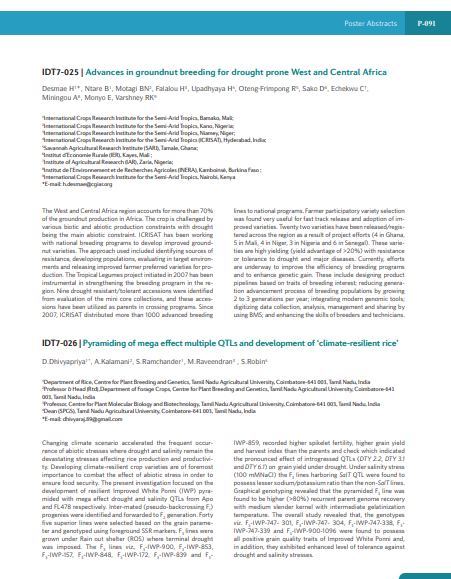Advances in groundnut breeding for drought prone West and Central Africa
Summary
The region of West and Central Africa accounts for more than 70% of groundnut production in Africa. The crop is challenged by various biotic and abiotic production constraints, with drought being the main abiotic constraint. ICRISAT has been working with national breeding programs to develop improved groundnut varieties. The approach used included identifying sources of resistance, developing populations, evaluating in target environments, and releasing improved farmer-preferred varieties for production. The Tropical Legumes project, initiated in 2007, has been instrumental in strengthening the breeding program in the region. Nine drought-resistant/tolerant accessions were identified from evaluation of the mini-core collections, and these accessions have been utilized as parents in crossing programs. Since 2007, ICRISAT has distributed more than 1,000 advanced breeding lines to national programs. Farmer-participatory variety selection was found to be very useful for fast-track release and adoption of improved varieties. Twenty-two varieties have been released/registered across the region as a result of project efforts (4 in Ghana, 5 in Mali, 4 in Niger, 3 in Nigeria, and 6 in Senegal). These varieties are high yielding (yield advantage of >20%) with resistance or tolerance to drought and major diseases. Currently, efforts are underway to improve the efficiency of breeding programs and to enhance genetic gain. These include designing product pipelines based on traits of breeding interest; reducing the generation advancement process of breeding populations by growing 2–3 generations per year; integrating modern genomic tools; digitizing data collection, analysis, management, and sharing by using BMS; and enhancing the skills of breeders and technicians.
Open resource Download resource Access resource on external site

